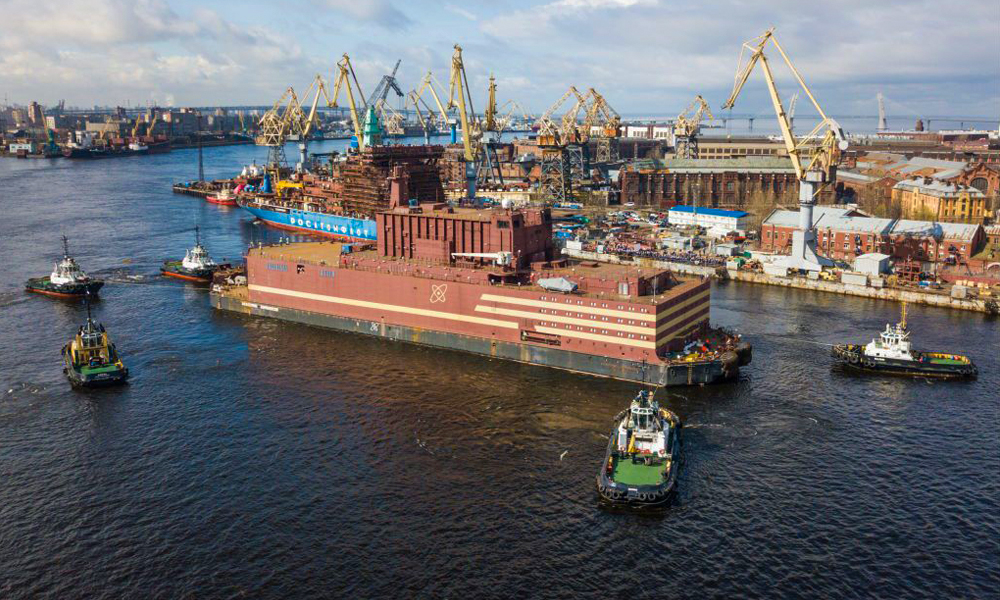Russia launches first-ever floating nuclear plant
Rosatom’s Akademik Lomonosov nuclear FPU sets sail to receive fuel in Murmansk

Russian state energy solution provider Rosatom has announced that the Akademik Lomonosov is now being towed to Murmansk, where fuel will be loaded into its reactors. The powership is the world’s first and only nuclear floating power unit (FPU) and is scheduled to be deployed in Pevek, Chukotka, in Russia’s far east.
According to Rosatom, construction works to create on-shore infrastructure are already underway in Pevek. The pier, hydraulic engineering structures and other critical buildings that are crucial for the mooring of the FPU and operation of a floating nuclear power plant (FNPP) will be operational by the time the vessel arrives.
“It is a significant milestone for our project as well as for the whole world’s nuclear industry. Floating nuclear power plants will enable electricity and heat supply to the most remote regions boosting growth and sustainable development,” said Vitaly Trutnev, director of Directorate for the Construction and Operation of Floating Nuclear Thermal Power Plants, a Rosatom subsidiary.
Following fueling and the onboarding of crew in summer 2019, the nuclear FPU is expected be towed to the sea port of Pevek. The vessel will be towed at an average speed of 3.5-4.5 knots.
“Building upon three hundreds of reactor-years of safe operation of units powering icebreakers, the FNPP features the most cutting edge safety and security systems and is expected to be one of the safest nuclear installations in the world,” Trutnev added.
The Akademik Lomonosov will replace Pevek’s aging Bilibino Nuclear Power Plant and Chaunsk coal-fired power plant, and is expected to save about 50,000 tons of CO2 emissions per year. Once connected to the grid, the FPU will become the northernmost nuclear installation in the world.
The nuclear FPU is equipped with two KLT-40C reactor systems (each with a capacity of 35 MW) similar to those used on icebreakers. The vessel is 144m long and 30m wide and has a displacement of 21,000 tonnes.
The lifecycle of the nuclear FPU is said to be 40 years with the possibility of being extended to up to 50 years. Rosatom notes that the FPU will be towed to a special deconstruction and recycling facility, once the FPU has completed its specified lifecycle and has been decommissioned.

























